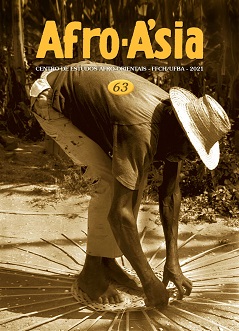Weaving imperial networks
an Asian Dimension of the British Atlantic Slave Trade in the 18th Century
DOI:
https://doi.org/10.9771/aa.v0i63.38307Keywords:
Atlantic slave trade, Indian cotton textiles, English East India CompanyAbstract
The eighteenth century saw the development of the Atlantic slave-based economy, sustained by a constant supply of labor from the African continent. On the Atlantic coast, in order to purchase captives foreign merchants had to meet local demands for trade commodities, notably Indian cotton textiles, which became a crucial product. During this period, the Anglo-Asian trade, conducted by the English East India Company, played a central role in the supply of Indian textiles for British slave traders. This paper addresses how British merchants procured textiles in India for Atlantic Africa. By examining this question, the paper illustrates a global cotton trade that extended between the areas where Indian textiles were produced and Atlantic Africa. Finally, the paper argues that the so-called “triangular trade” narrative should be replaced by another perspective that emphasizes the agency of African consumers and South Asian weavers.
Downloads
Downloads
Published
How to Cite
Issue
Section
License
Copyright (c) 2021 Kazuo Kobayashi

This work is licensed under a Creative Commons Attribution 4.0 International License.
You are entitled to freely share, adapt and use the work herein published for any legitimate purpose as long as authorship and the original source are acknowledged.




